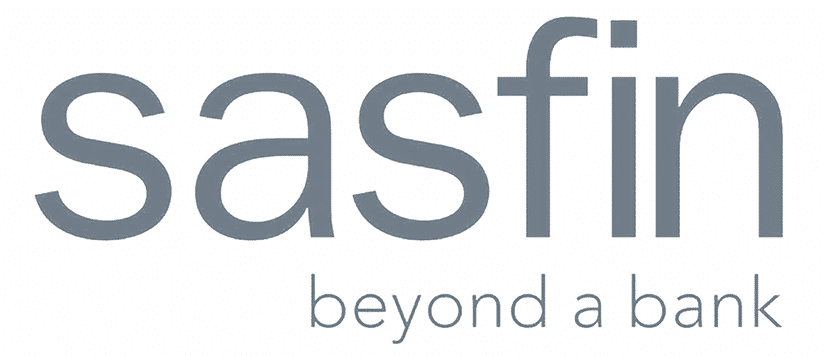In the digital age, when everything is at our fingertips, brand trust has become one of the most valuable assets a company can possess. Consumers are no longer dependent on adverts or product claims. They use Internet-based reviews, social media, and digital communities to form their opinions instead. This is where digital public relations (PR) plays a significant role in building credibility. When done right, a digital PR strategy builds reputation, profile, and credibility by fostering real-world relationships with real people.
Customers’ long-term support and business operations are based on brand trust. A brand that can be trusted not only attracts customers but also retains them. In a competitive climate, trust is what separates a cherished brand from one that falls by the wayside. Digital PR operates between the corporate message and how it should be exposed to consumers, where a communication strategy turns into transparency and authenticity, digitalisation becomes publicity, and vaporisation takes place.
Transparency and Authenticity as the Foundation of Brand Trust
In the digital age, trust is based on transparency and authenticity. In a world inundated with information and advertising, consumers want realness more than ever. Digital Public Relations provides brands with the tools and outlets they need to speak transparently, engage in candid discussions about issues, and demonstrate genuine integrity. As the brand becomes more transparent, it gains credibility; as the brand becomes more authentic, it also builds an emotional connection.
The foundation of the digital PR agency is straightforward and transparent communication. Whether it’s a product detail, price, or company value, brands should provide information that is straightforward, clear, and accurate. Honesty is established by not making exaggerated claims and admitting limitations. Viewers can sniff out a fraud, and once trust is violated online, it’s tough to earn back. Far from lessening lecturers’ personal and professional market value, openness about mistakes or difficulties can enhance one’s reputation by building credibility.
Authenticity and its counterparts are closely tied to transparency. Being authentic in digital public relations means being conversational, having a human brand personality, and engaging with stakeholders, not at them. Brands that are real about sharing their stories tend to be accessible and believable.
For instance, some companies may utilise blogs, podcasts or LinkedIn posts to provide behind-the-scenes perspectives on decision-making or company culture. These initiatives help make audiences feel a part of the brand’s journey. When transparency and authenticity are the consistent tenets of a digital PR strategy, they change how people perceive an organisation —not just an esoteric company with no name, but a values-driven, empathetic, and honest brand.
Building Credibility Through Social Media and Content Strategy
In an era of digital communication, social media and content strategy are essential tools in establishing brand trust. Digital Public Relations leverages these platforms not only to disseminate information, but also to share, educate, learn, and listen. Trust is gained when brands deliver high-quality, useful, and authentic content that aligns with their audience’s needs.
Social platforms offer a direct channel for brands to communicate with clients in real-time. This will give your brand a human aspect, telling the story of who is behind and within it. Thorough and prompt answers to customer queries are a testament to listening with interest and being dependable. Whether through LinkedIn thought leadership articles, Instagram stories or Twitter threads, regular communication helps to build trust and public perception.
But trust-building means more than just posting often. It’s the quality, tone, and appearance that really count. The content must align with the brand’s values, rather than merely being a form of advertising. Articles, user posts, testimonials and case studies are all ways to boost an image of authority and authenticity.
Consistently across platforms, another key factor in digital PR is consistency. Mixed signals or incongruent branding can lead to misunderstanding and doubt. When messaging, style and tone match visuals, it communicates professionalism and trust.
Adding transparency to information adds credibility. Confidence comes from sharing data, sources, and proofs that support the claim. Audiences instinctively respond to brands that defend their messages with evidence and truth. In a nutshell, a great social media and content strategy provides digital PR with the kind of trust-building boost it needs — one that not only encourages engagement but also fosters long-term respect and advocacy.
Leveraging Influencer Partnerships to Strengthen Trust
As for digital Public Relations, influencer marketing has become a significant player in reaching and cultivating brand trust. The individuals people trust are those they can relate to, not direct messages from corporations. Influencers act as intermediaries between brands and consumers, providing credibility, relatability, and authenticity that are often missing from conventional advertisements.
However, influencer relationships must remain authentic to be effective. In the digital PR space, this involves working with influencers whose beliefs and association with the brand come naturally. A mismatch can feel inauthentic and damage trust. Good partnerships, however, read more like endorsements than advertisements.
In this area, micro-influencers have become incredibly successful at building trust. They are likely to have fewer followers but also more engaged ones, those who see them as genuine voices and not marketing pawns. A micro-influencer’s authentic view of a product or service makes followers see the post as an actual recommendation rather than canned ad copy.
Transparency is also a massive deal in influencer partnerships. Partnerships between influencers and brands must be clearly disclosed to ensure that their audiences are not misled. This can be aligned with compliance and represents the ethical side of two-way communication, which helps maintain trust by keeping people as informed as possible.
Influencers can also amplify digital PR campaigns by providing a human face to the brand and crafting stories that resonate with their audience. They also help brands connect with audiences through storytelling rather than selling. When executed well, influencer partnerships can not only amplify reach but also enhance authenticity in a way that converts recipients into loyal proselytisers. Ultimately, trust is built through open and consistent engagement.
Managing Crises and Protecting Brand Reputation Online
No brand is crisis-proof, especially in an age where news travels at the speed of light. Whether it’s a product issue, societal outrage, or a misunderstanding that the company fails to address, how a company reacts in a crisis can significantly impact its reputation and credibility. Strategic digital public relations is vital in managing crises, transparency, and rebuilding trust.
The first key to digital crisis management is being prepared. A brand’s Communication Plan should detail who is responsible for what in a crisis, how the response is assembled, and what is communicated. During a crisis, coordinated and timely action helps reduce misinformation and speculation. In turn, AI monitoring tools can assist PR by enabling the early identification of negativity from the audience and facilitating faster action in response to an issue before it escalates.
I believe there is a significant role of transparency here. Attempting to cover up or downplay a problem typically exacerbates it. Instead, companies that admit their mistakes and take responsibility are those most likely to win back the public’s trust. Sincere apologies, detailed explanations and regular updates demonstrate accountability as well as respect for the audience’s intelligence.
During times of crises, social media is both a hazard and an asset. It’s a vessel for negativity, but it also enables direct, real-time communication. Non-response can become a professional opportunity when responded to with empathy.
Post-crisis reflection is vital. Reflecting on what has gone wrong and gathering feedback to inform lessons learned strengthens future resilience. Essentially, it turns out that effective crisis management through digital PR is not so much about damage control as it is about trust strengthening. When managed with honesty and empathy, crises can even increase the public’s respect for a brand.
Conclusion
Trust, after all, is the new currency of our digital society, and digital public relations is one of the ways we generate brand trust. At a time when information is shared at the speed of light and consumers demand honesty and authenticity, brand trust can no longer be built on slick advertising; it must be earned through honest dialogue.
Candidness and authenticity build credibility. Companies that are open and show human sides build enduring emotional connections. Content and social strategies further the trust by continuously providing high-quality messaging. Influencer relationships give credibility an extra reach and a human voice. Strong crisis management, meanwhile, means that even when things go wrong, the brand remains in solid shape.
GET IN TOUCH WITH THE DIGITAL SCHOOL OF MARKETING
Do you want to become a digital public relations expert with the Digital School of Marketing? If you do, you must do our Digital Public Relations Course. Follow this link to find out more.
Frequently Asked Questions
Digital public relations is a valuable tool for building brand trust in the way a brand communicates and engages online. This includes transparency, genuine content and helping to manage digital perception. Over time, by maintaining a clear voice, a compelling narrative, and a willingness to engage proactively with their audience, brands can demonstrate that they are credible and dependable.
Transparency creates trust by demonstrating honesty and responsibility. In the digital age, businesses that can talk honestly about what you’re doing with your stuff – good or bad – have more credibility. People are real, and they respond to genuineness. When brands are willing to acknowledge their mistakes, update information and share accurate accounts, it sends a message of trust and honesty.
Another great avenue for digital public relations is social media, as brands can interact with their audiences directly in real-time. In their responses to questions, feedback, or complaints, brands demonstrate that they care about their customers’ experiences and that it matters. This provides a sense of authority and consistency, which can enhance trust and establish a clear brand voice. Transparency in interactions, involving recognition of errors and honest updates, builds loyalty.
A key aspect of digital PR, influencer collaborations are effective because influencers are trusted voices within specific communities. Their genuine recommendations often carry more weight than brand messages themselves. Brands working with influencers who are aligned with their values and truly believe in the products can endorse in this format because it feels authentic to the audience. Transparency is crucial; both the influencer and the brand should clearly disclose any partnerships they have.
In a crisis, having digital PR support ensures that a brand can secure and re-establish trust by being honest and open in its communications and acting quickly with empathy. PR pros are monitoring online sentiment and responding promptly to correct any misinformation. Discussing the issue head-on demonstrates responsibility, and maintaining a steady, optimistic tone helps keep consumers calm. To that end, a good digital PR strategy also involves post-crisis analysis to learn from the lessons.
.
Brands can preserve that trust in the long term by adopting continuous communication, authentic storytelling, and proactive reputation management. However, it’s also the constant communication with audiences on social media, blogs, and digital campaigns that keeps them visible and credible. Keeping an eye on online complaints ensures the brand can respond fast and openly. Working with influencers and sharing the user-generated content provides a touch of authenticity.





















